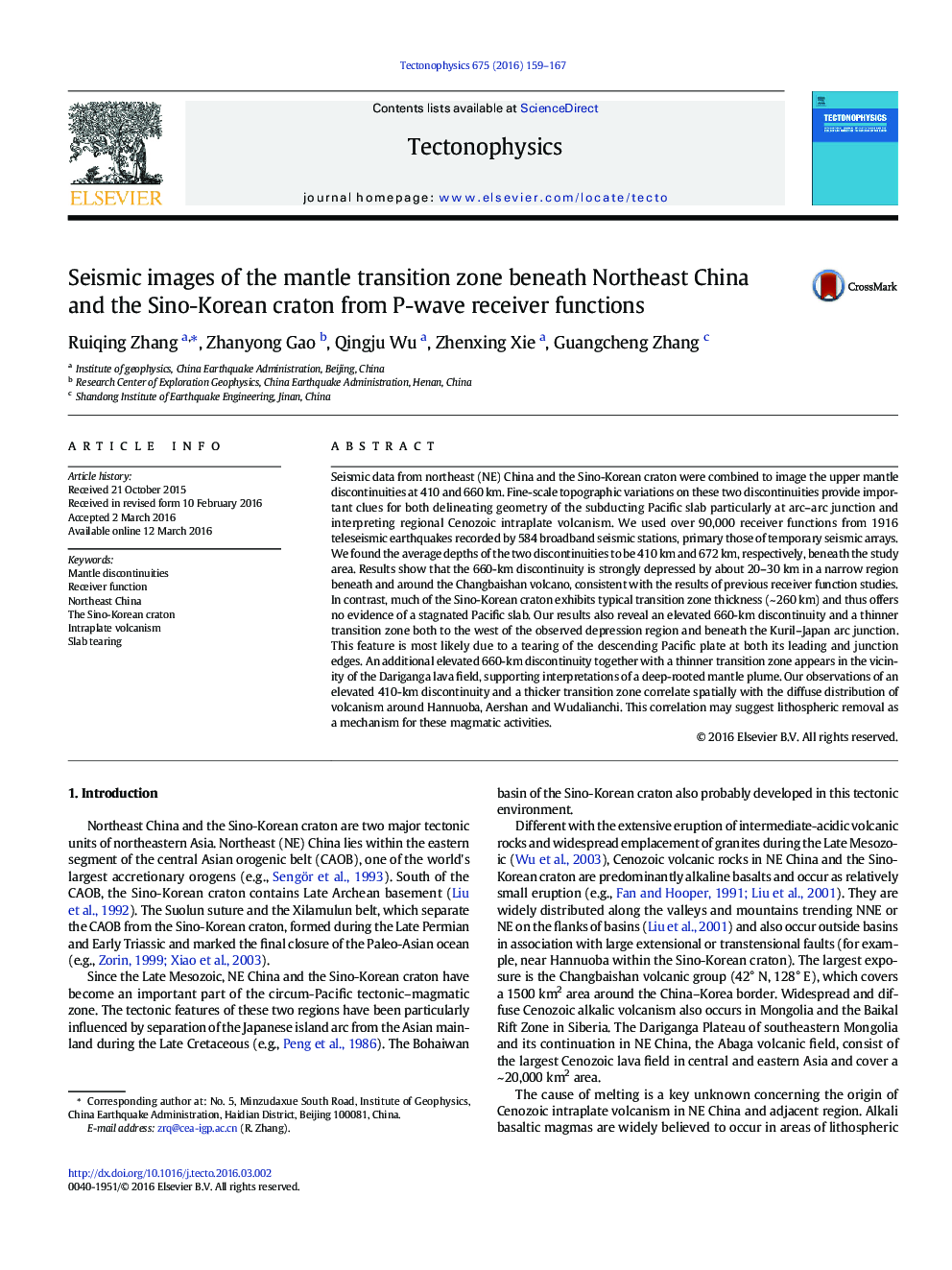| کد مقاله | کد نشریه | سال انتشار | مقاله انگلیسی | نسخه تمام متن |
|---|---|---|---|---|
| 4691290 | 1636722 | 2016 | 9 صفحه PDF | دانلود رایگان |

• P-wave receiver function image of the mantle transition zone beneath northeast China and the Sino-Korean craton;
• The detached lithosphere invokes the intra-plate volcanism in Hannuoba, Aershan and Wudalianchi;
• Evidence of slab tearing laterally or vertically at the leading or junction edges of the descending Pacific slab at a depth of 660 km;
• No evidence of slab stagnant under much of Sino-Korean craton in China.
Seismic data from northeast (NE) China and the Sino-Korean craton were combined to image the upper mantle discontinuities at 410 and 660 km. Fine-scale topographic variations on these two discontinuities provide important clues for both delineating geometry of the subducting Pacific slab particularly at arc–arc junction and interpreting regional Cenozoic intraplate volcanism. We used over 90,000 receiver functions from 1916 teleseismic earthquakes recorded by 584 broadband seismic stations, primary those of temporary seismic arrays. We found the average depths of the two discontinuities to be 410 km and 672 km, respectively, beneath the study area. Results show that the 660-km discontinuity is strongly depressed by about 20–30 km in a narrow region beneath and around the Changbaishan volcano, consistent with the results of previous receiver function studies. In contrast, much of the Sino-Korean craton exhibits typical transition zone thickness (~ 260 km) and thus offers no evidence of a stagnated Pacific slab. Our results also reveal an elevated 660-km discontinuity and a thinner transition zone both to the west of the observed depression region and beneath the Kuril–Japan arc junction. This feature is most likely due to a tearing of the descending Pacific plate at both its leading and junction edges. An additional elevated 660-km discontinuity together with a thinner transition zone appears in the vicinity of the Dariganga lava field, supporting interpretations of a deep-rooted mantle plume. Our observations of an elevated 410-km discontinuity and a thicker transition zone correlate spatially with the diffuse distribution of volcanism around Hannuoba, Aershan and Wudalianchi. This correlation may suggest lithospheric removal as a mechanism for these magmatic activities.
Journal: Tectonophysics - Volume 675, 22 April 2016, Pages 159–167